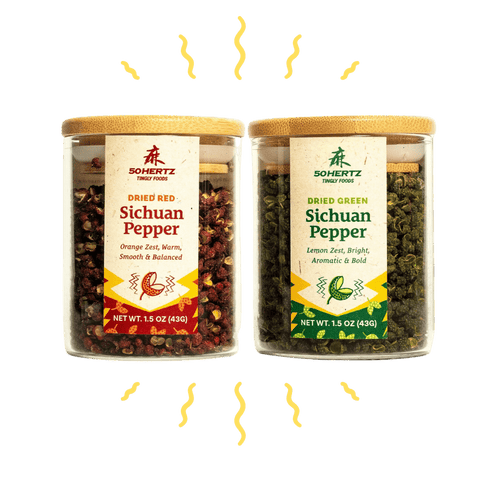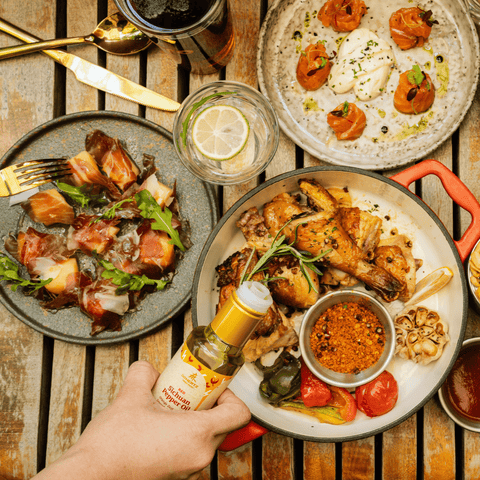Fiercely spicy, tingling and aromatic, Chongqing noodles are one of the most popular street foods of China. I eat ramen for its rich broth, pho for its refreshing broth, pasta for its texture, but nothing beats the flavor explosion in bowl of Chongqing noodles for me. It's been there as my celebration of a promotion and as my comfort of a breakup. Watch the video below talking about our story of 50Hertz and cooking this recipe.
In recent years, Chongqing “small” noodles have become popular not only all over China but also in big cities overseas. In Chongqing, customers are usually just busy slurping on the sidewalks on makeshift tables or simply plastic stools.


Compared to Dan Dan Noodles, I prefer my Chongqing Noodles for the green vegetable layered liberally underneath the noodles. My opening remark to the owner of a noodle shack is: “老板,二两小面,加菜!” “Boss, two liang (100g) of small noodles, extra vegetables!” You can customize your noodles with various toppings: braised beef, cooked yellow peas (or chickpeas), ground pork or simply fried eggs.

These noodles aren't usually fiendishly chili-hot, but our local Chongqing people like to add ground Sichuan peppercorns or Sichuan pepper oil for the aroma and the lovely tingling sensation.

Ingredients (1serving):
100g (3.5oz) dried wheat-flour noodles
A good amount of green vegetables (bok choy, snow pea shoots, water spinach, etc.)
1 stems of green onions
1 garlic clove and 1 inch ginger, both minced
For the seasonings:
1 tbsp chili oil or Lao Gan Ma
1 tsp Red Sichuan Pepper Oil
1 tsp Green Sichuan Pepper Oil (drizzle at the end for its aroma)
2 tbsp light soy sauce
2 tbsp black vinegar
1 tsp sesame oil
some pickled vegetable and peanuts (optional)
Directions:
1. Boil a pot of water while you prepare the base.
2. Make ginger garlic sauce: put the minced garlic and ginger in a bowl and pour in 1/2 cup of boiling water. Stir to bring out the flavor from ginger and garlic.
3. Get a decent size bowl to make the seasonings. Put in soy sauce, vinegar, chili oil, red Sichuan pepper oil, sesame oil and the ginger garlic sauce. Use a spoon to stir and mix them well.
3. Put the green vegetables in the boiling water. Once they become soft and the water green-ish, add one ladle of hot water or stock in the seasoning mix and place the vegetables in the bowl. Alternatively, if you wish to have the flavor stronger and undiluted, you might want to have your noodles "dry-tossed" (干溜儿).

Once the vegetables are out, put the noodles in the water and boil to your liking. I prefer them al dente. While you can also follow the instruction on the noodle packaging, my grandmother taught me the rule of "two boils", i.e. bring the noodles to the first boil, add a cup of water, and then bring it to the second boil, then place the noodles in the bowl. Finally, drizzle a little green Sichuan pepper oil on top for its superb aroma, place some diced green onion on top and the toppings of your choice. I like two fried eggs.

















Comments (5)
looks great!
Making this dish tonight and am unclear as to how the garlic should be treated/added to recipe? Thanks.
I watched the cooking class last night, and was very inspired – I made it tonight and it was absolutely delicious! Thank you so much for sharing this experience with us!
Hello,
I am Celiac and cannot eat the wheat noodles. I can eat rice and rice noodles. Would they adapt to this recipe?
Thank you
This sounds great, especially now that it is cold out. I will try it soon!